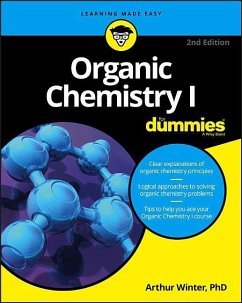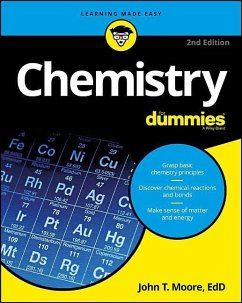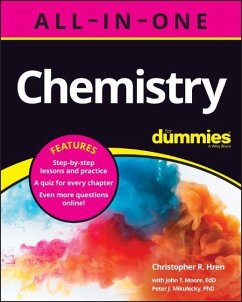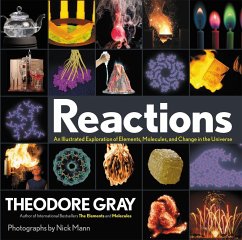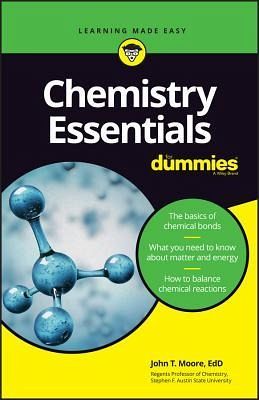
Chemistry Essentials for Dummies
Versandkostenfrei!
Versandfertig in 2-4 Wochen
18,99 €
inkl. MwSt.
Weitere Ausgaben:

PAYBACK Punkte
9 °P sammeln!
* All of the critical calculations * What you need to know to conquer chemistry * Concise coverage of key topics Your handy guide to critical chemistry concepts This friendly and useful reference focuses on concepts taught in a typical first semester college or high school chemistry class. From bonds and reactions to acids, bases, and the mole, get to the heart of matter and energy. Discover the ins and outs of chemical reactions, including how they occur and how they can be balanced, and learn how to read and use the periodic table of elements. Chemistry Essentials For Dummies is perfect for...
* All of the critical calculations * What you need to know to conquer chemistry * Concise coverage of key topics Your handy guide to critical chemistry concepts This friendly and useful reference focuses on concepts taught in a typical first semester college or high school chemistry class. From bonds and reactions to acids, bases, and the mole, get to the heart of matter and energy. Discover the ins and outs of chemical reactions, including how they occur and how they can be balanced, and learn how to read and use the periodic table of elements. Chemistry Essentials For Dummies is perfect for cramming, homework help, or as a reference for parents and tutors helping students study for exams. Inside... * How to measure matter * Atomic structure explained * The periodic table of elements * Tips for balancing chemical reactions * Ionic and covalent bonds * Properties of acids and bases * Ways to use electron-dot formulas
Dieser Artikel kann nur an eine deutsche Lieferadresse ausgeliefert werden.




